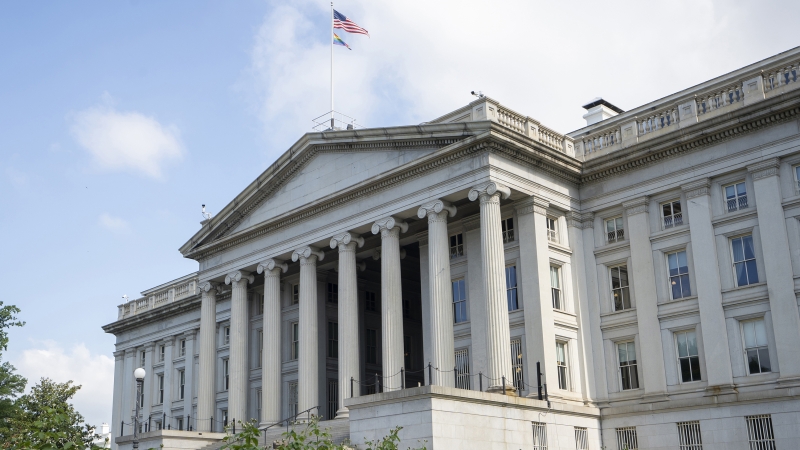Freddie Mac officials conducted two homebuying journey consumer surveys with 1,600 Black and Latinos and asked them a series of questions, including primary residence area, family composition, homeownership status, living situation, credit score and reason for exiting the homeownership process.
They also conducted dozens of interviews with consumers, counselors and experts about housing related issues in the plan.
“Our focus is on removing barriers, not just for the loans Freddie Mac may ultimately buy, but also for the broader housing system,” said Pamela Perry, Freddie Mac’s single-family vice president of equitable housing. “Our plan involves using data and our role in the market - and an intense commitment - to tackle issues around three main topics: access to credit, property valuation gaps and financial education.”
How To Know It’s Working
In order to help Fannie Mae implement the plan and for it to succeed, officials said they will need to commit to working collaboratively and transparently with industry participants, and that the plan’s progress will rely on partnership with mortgage lenders, local and state housing officials, and many others across the mortgage industry.
“We are tracking our progress against the actions outlined in the plan and will measure success by how many barriers we knock down and by who benefits when they are removed,” she said, adding that Fannie Mae will create and publicly share an annual progress report of its efforts.
Freddie Mac officials pointed to an already successful initiative it began last year and a sister plan it unveiled in June.
The initial initiative helps renters build credit by encouraging operators of Freddie Mac-financed multifamily properties to report on-time rental payments to the three major credit bureaus. Since the program began, officials said, 70,000 households in more than 800 rental properties have enrolled, resulting in more than 15,000 new credit scores being established and 67% of renters seeing their existing credit score increase.
The new initiative aims to increase home ownership opportunities for first time buyers by considering on time rent payments as part of the company’s loan purchase decisions.
“This extremely important decision will help many renters move closer to achieving the dream of home ownership,” DeVito said. “Millions of Americans lack a credit history. By factoring in a borrower’s responsible rent payment history into our automated underwriting system, we can make home possible for more qualified renters, particularly in underserved communities.”
In June the Mortgage Bankers Association and the National Fair Housing Alliance announced a new online toolkit for lenders interested in developing special purpose credit programs in order to offer mortgage credit to economically and socially disadvantaged borrowers in order to meet their needs.
Bob Broeksmit, MBA’s president and CEO, said the goal is to bring the mortgage industry together to develop effective policies and resources that will help close the racial homeownership gap.
“The online toolkit is designed to provide useful guidance and data analysis for mortgage lenders that are interested in using SPCPs to serve economically disadvantaged communities, as well as minority borrowers, most of whom lack the generational wealth to fund a down payment,” Broeksmit said.
A Good ‘Historic’ Start
Janneke Ratcliffe, vice president of the Housing Finance Policy Center at the Urban Institute, applauded both plans and called them “historic” because, unlike previous GSE efforts to increase homeownership, these specifically target communities of color while also addressing the rental market.
Ratcliffe said she sees plenty of good elements in the plan, from its inclusion of the lending community and efforts to reduce the costs and friction that come with mortgage applications, to rent reform and the robust research agenda.
And while she feels it’s important to recognize the difficulty of the task ahead for both companies Ratcliffe believes there is room for improvement, especially in the area of tangible metrics.
“How can they tell if it’s working?” she said.
The answer for Ratcliffe lies in Fannie Mae and Freddie Mac’s ongoing investment in and attention to data.
“They have the capacity to build robust data collection,” she said, adding that she thought tracking SPCPs would yield tangible results. “You should see those that are getting into mortgages fairly quickly,” Ratcliffe said.
Challenges Ahead
Jones reiterated that reversing the United States’ legacy of discriminatory practices in housing will take many years, but added that Fannie Mae is committed to a range of specific and meaningful actions in the next three years that are designed to knock down housing barriers and access to mortgage credit for individuals who by virtue of their race, ethnicity, or other characteristic have been historically underserved by the housing and mortgage finance system. “We believe the actions outlined in the plan are essential to advancing quality, affordable rental housing and equitable and sustainable access to homeownership across America, that in the long-term, will benefit all people on their housing journeys,” she said.
Freddie Mac officials are of the same mind, noting that the inequities facing Black and Latino communities are longstanding, and addressing this crisis demands long-term commitment and focus.
“The road ahead is challenging, but not insurmountable,” said Freddie Mac President Michael Hutchins. “With the partnership of lenders, investors, policymakers and other industry participants, we intend to make meaningful progress towards an equitable housing finance system that provides access to wealth, opportunity and a sense of home to people and communities across the United States.”








